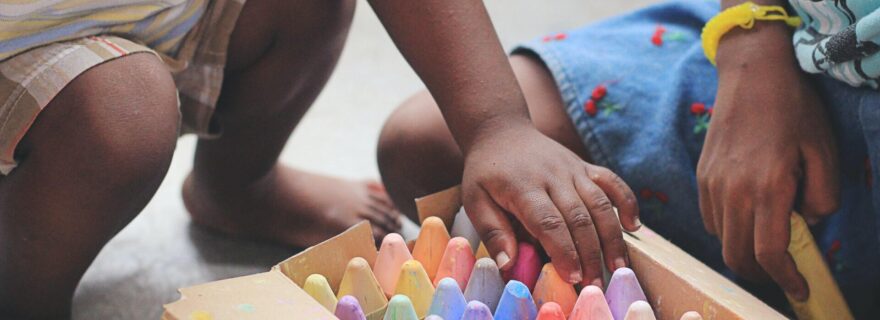History matters in child care
Residential and institutional care is not a question of extent or degree, but rather a question of absolute abolition on account of what it historically represents and continues to perpetuate
Recently the world celebrated Black History month and it was an opportunity to take stock of the progress that Black and other ethnic minority groups have made since emancipation from slavery and colonialism.
It was also a time to reflect and learn from the atrocities of the past and reinforce mankind’s covenant never to allow history to repeat itself. The discovery of mass unmarked graves on sites of former Canadian Indian residential schools in Canada prompted me to add to the discourse of ending residential and institutional child care from a historical perspective. I will argue firstly that children from countries with a history of racial segregation and an established system of residential and institutional child care form the highest percentage of children in such institutions. Secondly, that despite provisions in the United Nations Convention on the Rights of the Child (CRC) and the United Nations Guidelines for Alternative Care of Children, residential and institutional care poses serious developmental risks and violations to the rights of children such that under no circumstances should it ever be an option – a family environment is the only appropriate setting for a child.
The effects of colonialism, slavery and apartheid still reverberate within those marginalised communities and are reflected in child care data. The theory of historical trauma provides a nexus to explain this phenomenon. In a nutshell, the theory propounds that societies subjected to long-term mass trauma are more likely to display higher prevalence of disease and experience social inequity even several generations after the original trauma occurred. In Canada, the discovery of graves since the 1990s (and the recent discovery of 715 last year) around sites of former Canadian Indian Residential schools culminated in the Truth and Reconciliation Committee calling it ‘cultural genocide’. It is estimated that between 3,200 to 30,000 children died as a result of neglect, illness or abuse in those institutions. It has also been reported that survivors suffer from deep-seated dissonance and dissimilation from their family and communities that has resulted in high prevalence rates of intergenerational suicide, alcoholism, domestic violence and the disintegration of families and communities. A report by the Ontario Human Rights Commission established that children from native indigenous and black communities are disproportionately represented in the child care system. It also further established as a matter of fact that such representation is on account of the nation’s colonial past. In 2018, African American children in the United States of America were 13.71% of the child population, yet 22.75% of them are in some form of child care. The same statistics also show that African American and Native American children were disproportionately identified as victims by protection services and waiting to be adopted. South Africa has experienced a bourgeoning surge of children entering residential child care institutions. For example, it is estimated that 1.8 million children are in need of adoption and are placed in institutions. Estimates vary as to the actual number of children in the child care system but the number ranges between 3.7 – 5.8 million with the majority being from the black population. It is clear from the data that across the board there is a correlation between the experiences of historically disenfranchised groups of people and the disproportionate representation of children of these groups in residential care in comparison to their counterpart, thus amounting to discrimination.
Allowing the continuation of residential and institutional child care by any degree under international or domestic law is a condonation of historical trauma and a perpetuation of intergenerational racial discrimination as it creates a vicious cycle. Article 9 of the CRC and the UN Guidelines on Alternative Care of Children agree that children must be kept within a family environment. However, they also allow for the removal of children from a family environment in circumstances where leaving the child there would not be in the best interests of the child and offers special protections under Article 20 CRC. The caveat here is that this must be done for the shortest period possible. The danger is that what amounts to the shortest period of time differs depending on the circumstances and may last for a matter of days, months and even years. Ultimately, the result is that a child placed in such institutions will still suffer from the adverse effects of the system. The dangers of residential and institutional care have been linked to detrimental effects on child development resulting in antisocial behaviour and risky behaviour. When measured up against the CRC general principles, residential care is discriminatory, it is not in the best interests of the child, it is devoid of child participation and detrimental to a child’s life and development.
The lack of reference to historical events lends credence to critical schools of thought that criticise the CRC for its lack of taking into account relativism and being an imposition of Western imperialist ideals. In the face of the accounted history of racial discrimination, it is incredulous that very little of the CRC and even the Committee general recommendations make reference to such events. States must abolish residential and institutional child care in order to end the entrenchment of historical social inequities. Instead, States must be encouraged to focus efforts on establishing foster care systems or look to more grassroot cultural and customary institutions such as kinship that offer a better alternative to the sterile regimented environment in institutions. It has also been recommended that establishing foster care is one thing, but where children of marginalised groups are concerned, the State must find appropriate families that share similar cultural values and social background to the child’s own in order to enable them to easily adapt.



0 Comments
Add a comment